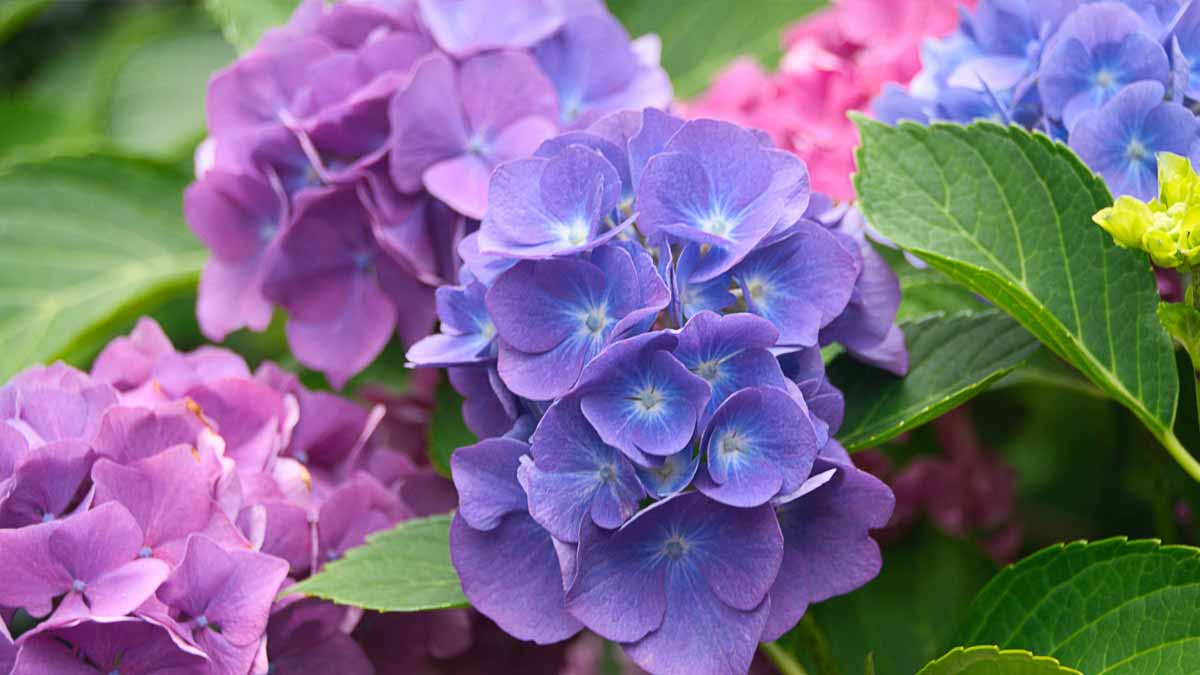Gardens change faster than we think, and beloved shrubs can fall behind. As summers run hotter and drier, leaves tire sooner and color fades early. Many yards now ask for less fuss and more strength. The shift affects hydrangeas, which once seemed effortless and lush. You will see why they struggle, how stress shows, and which choices keep borders vivid with simple care. Simple steps can guide the change with calm.
Why a changing climate unsettles garden shrubs
Healthy shrubs thrive with steady soil moisture, mild days, and gentle humidity. Those basics now slip more often. Heat builds earlier, wind strips moisture, and rain arrives in bursts that run off. Leaves scorch at noon, then droop by dusk. Color shortens, and buds stall before they open.
These swings hit hydrangeas hardest because large leaves lose water fast and roots sit near the surface. Shade helps a bit, yet hot nights still stress cells. Regular watering cannot restore balance when humidity falls and soil warms. Plants fade sooner, so bloom time shrinks and structure weakens by summer.
Gardeners often ask if location alone can fix the slide. North light, mulch, and wind breaks do reduce stress, so beds cope longer. Results still vary because regional patterns now shift quickly. Cool, wet pockets exist, though many neighborhoods face long dry spells and sun that bites.
Why more water won’t save hydrangeas
When air turns hot and dry, extra irrigation cools soil for minutes, not hours. Pores close to limit loss, so leaves still wilt. Wet roots then sit in warm, soggy ground, which starves them of air. Stress lingers, and growth stalls even while the surface looks well watered.
That soggy cycle invites rot and leaf disease. Warm moisture fuels fungal spread, so stems slump after looking fine at dawn. Gardeners see brown edges and dull flower heads. Extra feeding cannot fix it. Tender tissue breaks faster under heat and low humidity, and wounds open paths for infection.
Even so-called drought tolerant picks within the group now hit limits. Trials show small gains, yet the combo of higher heat and lower humidity overwhelms them. Results improve when weather eases or microclimates help. Move pots, add shade, and time watering at dawn to lower strain on hydrangeas.
Early warning signs and simple tests
Stress shows fast on broad leaves. Edges crisp like paper, green turns flat, and buds pause. Stems dip by noon despite damp soil, then recover late. Flower heads fade early, so color looks washed. Those patterns mean heat and dry air, not poor feeding or rough pruning.
Try small, clear tests before making big changes. Shift one shrub a few feet to deeper shade and track response for two weeks. Lay three inches of mulch to slow evaporation and cool roots. Set a wind screen on the hottest side, since dry gusts pull moisture fast.
Check morning moisture with your hand, not just a meter. Soil that feels cool below the top inch helps leaves last through noon. Water at dawn, then leave space for air around the canopy. These tweaks can buy time, yet hydrangeas still struggle when nights stay warm.
What extremes reveal about hydrangeas and microclimates
Heat waves now test every weak spot. During the 2022 spikes, one nursery owner reported losing seventy percent of a large collection despite daily watering. Moist beds stayed wet, yet canopies still drooped. Warm nights and dry air kept stress high, so plants never reset before sunrise.
Shelter does help in special pockets. Courtyards with tall walls trap cooler air, and dense trees cast true afternoon shade. Loamy soil with steady moisture carries roots through spikes. Those microclimates keep flowers longer, while open lawns bake. Results show the gap between survive and thrive across a single block.
Think like a map maker. Mark cooler corners, breezy gaps, and wet spots after storms. Shift sensitive shrubs there, then group tougher plants in harsh sun. Clear goals shape care, yet the wider trend remains. Most seasons now tilt hotter and drier, which still pushes hydrangeas hard.
Alternatives that love heat, wind, and lean water
Color and texture need not fade with change. Choose drought-tolerant stars that welcome sun and lean care. Lavender brings scent and pollinators. Russian sage adds haze and silver. Ceanothus offers blue clouds on tough wood. Ornamental grasses move with wind and glow in backlight near paths.
Layer fall bloomers to stretch the show. Echinacea stands tall with bold cones that birds love. Rudbeckia holds warm gold deep into the season. These picks keep borders lively when older choices tire. Designers suggest planting in groups, since bold blocks read well from the street view.
Plan beds that thrive, not just cope. Pick right plant, right place, then water deeply and less often to set roots. Add compost to improve structure, yet avoid rich feed that drives weak growth. Use this lens even when you keep one or two hydrangeas as a memory piece.
A resilient garden grows by choosing for tomorrow’s weather
Change feels hard, yet it also opens space for better design. Set goals around color, light, and time, then pick plants that meet them with ease. Your yard will waste less water and invite more life. Keep a few memories if they still fit, yet let tough choices lead. That path honors place and season, while hydrangeas step aside without taking beauty with them. Resilience turns into style when beds match the weather, not the past.
